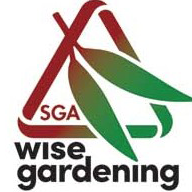WiseGardening shows risks of garden chemicals to humans, birds, bees, frogs and other species when you use them to control pests, diseases and weeds and helps you choose wisely.
As estimates of the number of synthetic chemicals in the world continues to grow by 2000 each year from around 144,000, it is worth knowing more about garden chemical products. Many may cause harm to:
- Users – if they spill or ingest them or breathe in the aerosols
- Species that visit or live in our gardens – birds, bees, fish, worms, frogs and a range of mammals such as pets especially if the chemicals persist in the soil
- Aquatic species – if the chemicals can be washed through soil and windup in streams and other waterways they may harm not only fish, but also other aquatic organisms.
In this Australia-first initiative, WiseGardening assesses and rates risks of garden chemicals in commercially available products (currently over 850 which together contain 413 ingredients) and alternative non-chemical options to help you make informed choices about dealing with garden problems.
If you would like to see what choices there are, WiseGardening is for you!
